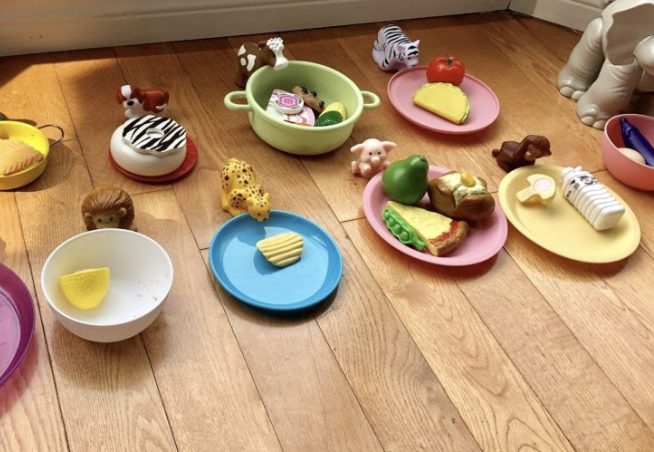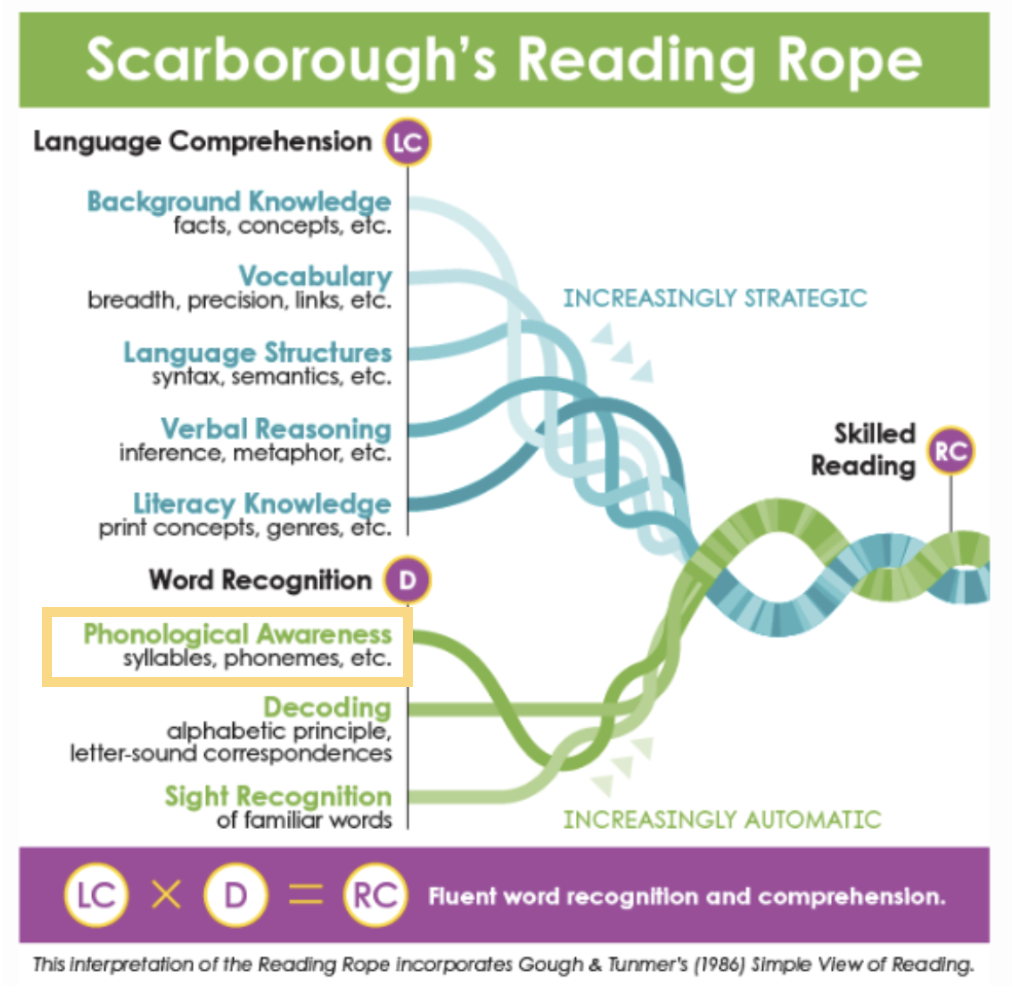Phonological Awareness
Phonological Awareness is the ability to hear and use the sounds of spoken language, including: 1) words 2) syllables, 3) onsets & rimes (the initial phonological unit and the string of letters that follows it, such as /c/ and -at in cat), and phonemes (the smallest unit of sound).
A child’s phonemic awareness – hearing and using the smallest unit of sound – is the best predictor of how well a child will learn to read in the first two years of instruction.
How might I realize if my child is struggling with Phonological Awareness?
Some clues that your child might be struggling with phonological awareness include:
Your child finds it challenging to think of rhyming words for simple words (like sit and fit)
Your child is stumped when you ask how many syllables are in her name
Your child has never shown any interest in word play, language games, or rhymes.
What general routines or habits help a child who struggles with Phonological Awareness?
Try to incorporate routines that have your child listen for and use different units of sound, from rhyming words, to syllable counting, to the individual sound. Accessible routines include:
Read books that rhyme. Sing songs with rhyme. Recite poems and nursery rhymes.
Clap the syllables in family member’s names, items in the house, and places you pass on the way to school.
Do individual sound activities, like:
“I’m thinking of an item that ends with /tch/. Can you find me something in your room that starts with /tch/? Good! You found a watch.”
“I’m going to say a word in slow motion. You say it back to me at regular speed. Ready? Sh… ar… k! What’s my word? Yes! Shark! Now it’s your turn to choose a word to say in slow motion, and I’ll say it back fast.”
“I’m going to give you a little pile of counters. I’ll say a word. You say it in slow motion and pull down one counter for each sound you hear. The first word is fast. Yes - /f/ + /a/ + /s/ + /t/. You pulled down four counters for four sounds. Now let’s do the opposite of fast, slow. Yes - /s/ + /l/ + /ow/. Three counters for three sounds.”
Tips
Activities
-

412 Rhymes
412 Rhymes is a 30-lesson sequence of interactive videos. Each video includes three instructional routines – Rhyme Time, Smash Word, and Letter Sounds.
Type of Resource: Digital
Driven by: Child
Time Required: About 15 minutes per lesson
Supplies Required: Digital device; WiFi
Sub-Focus: Rhyming, phonemic awareness, letter-sound knowledge
Author: Pittsburg Reads and its affiliates: OpenLiteracy, A+ Schools, and Kinselland
-

Rhyme Production
The first three activities under the red box labeled “Rhyme Production” are for children who need to work on rhyming. They include Rhyming Pairs Basket, Mystery Bag, and Read Rhyming Books.
Driven by: Caregiver
Time Required: As little as 5 minutes and up to 15 minutes each (depending on length of book selected)
Supplies Required: 1) Rhyming Pairs Basket: objects from around the house that rhyme; a basket, bag or surface to place them in/on 2) Mystery Bag: random objects from around the house; a bag to place them in 3) Rhyming Books: check out books from local library that rhyme (list of ideas here)
Sub-Focus: Rhyming
Author: Mrs. Barhorst, a first grade teacher
-

Syllables
Midway down the page, there is a teal box labeled “Segmenting Words into Syllables” and it’s for children who need to work on hearing the syllables (or beats) in words. Breaking words into syllables helps kids read and spell words that are unfamiliar to them.
Driven by: Caregiver
Time Required: 5-10 minutes each
Supplies Required: Use Your Chin: none ; Other Ways to Separate Words into Syllables: none; Syllable Scavenger Hunt: objects around the house your child finds; a sorting sheet labeled with 1, 2, 3, 4, and 5 for number of syllables in the name of the object; Let’s Get Physical: paper labeled with 1, 2, 3, 4, and 5 for number of syllables in the word; ball (optional); Syllable Tally: paper and pencil/crayon/marker
Sub-Focus: Syllables
Author: Mrs. Barhorst
-

Isolating Sounds
Across the page, you’ll three activities that help kids fine-tune their ability to hear sounds: 1) “Animal Breakfast” 2) “Punch it Out” and “Begin with the End.” and 3) Roller Coaster Words.”
Driven by: Caregiver
Time Required: 5-10 minutes each
Supplies Required: Animal Breakfast: stuffed animals & real or pretend food items (or photos of these) that have the same beginning sound (like lemon/lion or dog/donut). The rest don’t require any supplies.
Sub-Focus: Identifying the position of a sound in a word
Author: Mrs. Barhorst, a first grade teacher
-

Blending Phonemes
Blending individual sounds into words and breaking a word apart into its individual sounds are the most powerful phonemic awareness activities your child can do to prepare to decode. In the link, head to the sections labeled “Blending Phonemes” and “Segmenting Words.”
Driven by: Caregiver
Time Required: 5-10 minutes each
Supplies Required: 1) Play Dough Balls: Play dough (other items that can be pushed together will work too). 2) I’m Thinking of a Word: none 3) Segmenting Words Into Phonemes: small objects such as cubes, coins, counters, candies, etc.; boxes drawn on a paper for each sound (like this, which can be printed for free)
Sub-Focus: Blending phonemes; segmenting words into phonemes
Author: Mrs. Barhorst, a first grade teacher
